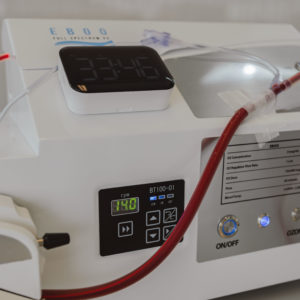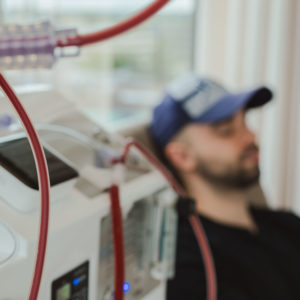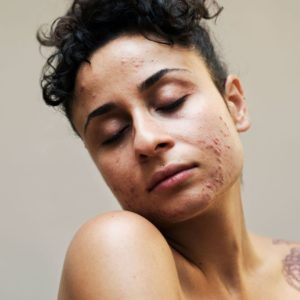
5 min|Dr. Jordan Dutton
Understanding UV Radiation: Protecting Your Skin in the Sun
Beauty, HealthThe Double-Edged Sword of Sunlight
In Vancouver, the sunny season is eagerly awaited. As the skies clear and the beaches crowd with sun-seekers, the city comes alive. The sun's warmth is both inviting and rejuvenating. However, it's crucial to remember that the sun has a darker side. Excessive and unprotected exposure can lead to skin complications, the most menacing of which is melanoma, an aggressive form of skin cancer. It's an established fact that chronic sun exposure and recurrent sunburns pave the way for skin cancer and accelerated aging.Diving Deep: What is UV Light?
UV light is the invisible part of the sun's spectrum that can cause damage to our skin. Here's what you need to know:UVA: This type is primarily responsible for photo-aging, immunosuppression, certain skin cancers, and phototoxicity in the presence of specific medications. Alarmingly, it constitutes 95% of the radiation in artificial tanning beds and penetrates our skin deeper than UVB does.
UVB: This is the culprit behind painful sunburns. But don't be mistaken - it too can lead to skin cancers and suppress our immunity.
The depletion of our protective ozone layer is worrisome. This phenomenon has amplified UVB exposure, resulting in a rise in certain skin cancers and melanomas. It's also vital to understand that UV radiation's intensity can be heightened by reflective surfaces like sand, snow, water, and even cement. And, while sunscreens do offer a layer of defense, they aren't foolproof. They should act as an ally in sun protection, not your primary shield.
A Cautionary Tale
During my medical internship in Arizona, I witnessed first-hand the devastating effects of unchecked sun exposure. Many patients in their late 30s and 40s, who had indulged in tanning during their youth, now bore the repercussions in the form of significant skin cancers. As they often confessed their past sunbathing sins, the presiding dermatologist would emphasize a haunting truth: the damage from UV radiation and past sunburns usually manifests years later. Balancing between absorbing sufficient vitamin D and overexposing one's skin is essential.The Importance of Vitamin D Beyond Sunlight
Vitamin D, often referred to as the "sunshine vitamin," plays a pivotal role in maintaining optimal health. While sunlight is a primary source of vitamin D for many, it's not the only way to obtain this essential nutrient. The significance of vitamin D goes beyond its well-known function in aiding calcium absorption for bone health. It also supports immune system function, helps regulate mood and ward off depression, and plays a role in heart health and weight management. For individuals who limit sun exposure due to skin concerns, geographical location, or personal choice, it becomes imperative to source vitamin D from alternatives. These can include dietary sources like fatty fish, fortified foods, and supplements. Ensuring adequate intake through these means is crucial, as a deficiency in vitamin D can lead to a range of health issues, from bone disorders to increased susceptibility to chronic diseases.Especially for Vancouver residents, incorporating a Vitamin D supplement is advisable. A daily dose of 1000-2000IU is suitable for adults, and 400IU for young children.
Guarding Your Skin: Practical Tips
Protecting your skin from the sun's harmful rays is vital for both short-term and long-term health. Here are 10 practical tips for safeguarding your skin:- Use Broad-Spectrum Sunscreen: Choose a sunscreen that protects against both UVA and UVB rays. Opt for an SPF of 30 or higher, and ensure it's water-resistant, especially if you'll be swimming or sweating.
- Reapply Sunscreen: Don't just apply once and forget. Reapply sunscreen every two hours and more frequently after swimming, sweating, or toweling off.
- Seek Shade: Especially between 10 a.m. and 4 p.m., when the sun's rays are strongest, find shade under an umbrella, tree, or other shelter.
- Wear Protective Clothing: Cover up with long-sleeved shirts, long pants, and skirts. Fabrics with a tight weave are more protective than those with a loose weave.
- Wear a Hat: Use a hat with a wide brim that shades your face, neck, and ears. This offers added protection to areas of the skin often exposed to the sun.
- UV-Protective Sunglasses: Protect your eyes and the sensitive skin around them by wearing sunglasses that block out 99% to 100% of both UVA and UVB rays.
- Avoid Peak Sun Hours: If possible, plan your outdoor activities outside the hours of 10 a.m. and 4 p.m., when UV radiation is at its peak.
- Avoid Tanning Beds: Tanning beds emit harmful UV radiation that can accelerate skin aging and increase the risk of skin cancer. It's a misconception that they are safer than natural sunlight.
- Use Extra Caution Near Reflective Surfaces: Water, sand, snow, and concrete can reflect the sun's rays, increasing the chance of sunburn. Be especially cautious and ensure you're well-protected in such environments.
- Stay Informed: Check the UV Index provided by local weather forecasts. High UV Index levels mean you should take extra precautions to protect your skin.
Are you looking for support with improving your health and longevity?
Book a consultation with one of our experienced Naturopathic Doctors today!
Book a consultation with one of our experienced Naturopathic Doctors today!
Related Articles

5 min|Dr. Alex Chan
EBOO for Chronic Inflammation: A Natural Approach for Systemic Relief
Regenerative Medicine, EBOO Therapy
5 min|Dr. Alex Chan
EBOO Therapy for Autoimmune Conditions: Exploring the Potential Benefits
Autoimmune Disease, Regenerative Medicine, EBOO Therapy



